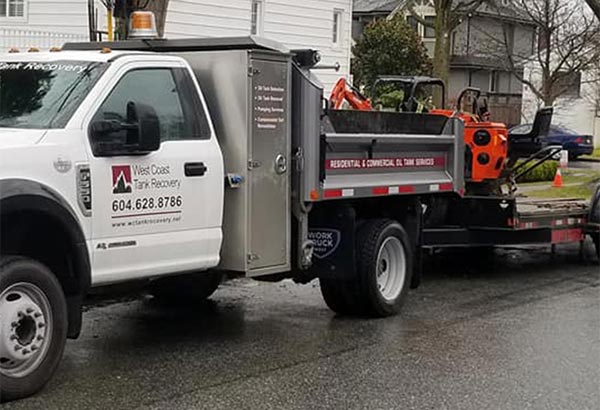 Fully Licensed and Insured
Fully Licensed and Insured Request an Oil Tank Scan
Request an Oil Tank Scan Request a Free Estimate
Request a Free Estimate

Ground penetrating radar has greatly shaped oil tank removal in the Lower Mainland, making the detection of buried oil tanks quicker and far more reliable.
The dangers of buried oil tanks
A buried oil tank on your property can affect you in a number of ways, including complications when selling your home, or gaining planning permission for a building project, or extension.
There are also potentially deeper concerns too, as you are liable for any contamination caused from the tank, even if you are unaware of its existence. This can consequently end up to costing a significant amount of money, especially if it contaminates other people’s property.
Ground penetrating radar
While there are a number of techniques used to discover whether an oil tank is required or not, ground penetrating radar presents the most effective, non-invasive method of finding out.
By sending pulses into the ground and measuring their return, ground penetrating radar is able to put together a visual image of what is lurking beneath. This visual image can then show whether the object is an oil tank, or whether it’s another metal substance or material.
Metal detector scanning
Another popular detection method used with oil tank removal in the Lower Mainland, is that of a high-powered metal detector.
While this is useful for detecting whether any metal is buried under your property, it can be difficult to know for certain whether it’s an oil tank. This is where ground penetrating radar really comes into its own, as it helps to clarify the situation.
Qualified professionals
Ground penetrating radar should only be utilized by experienced and qualified professionals, as the right knowledge is required to operate and understand the equipment and results.
In using a qualified and reputable company for your ground penetrating radar and oil tank removal services, you can rest assured of a hassle-free and efficient approach, while also mitigating potential hazards along the way.